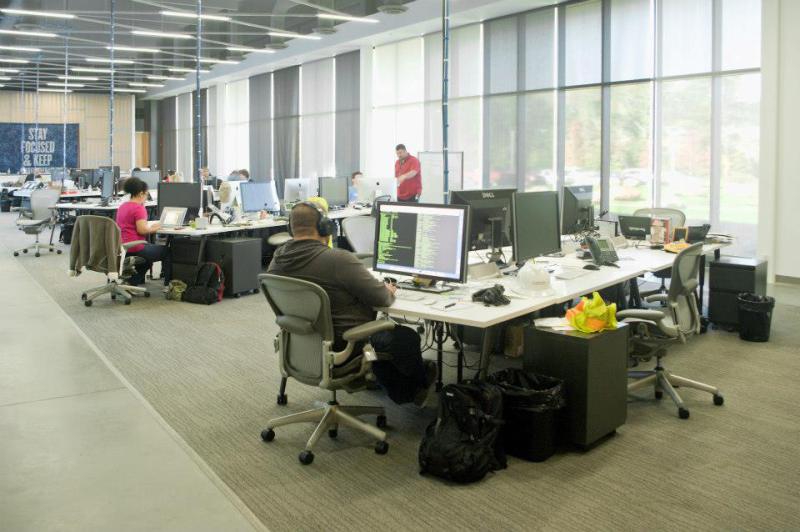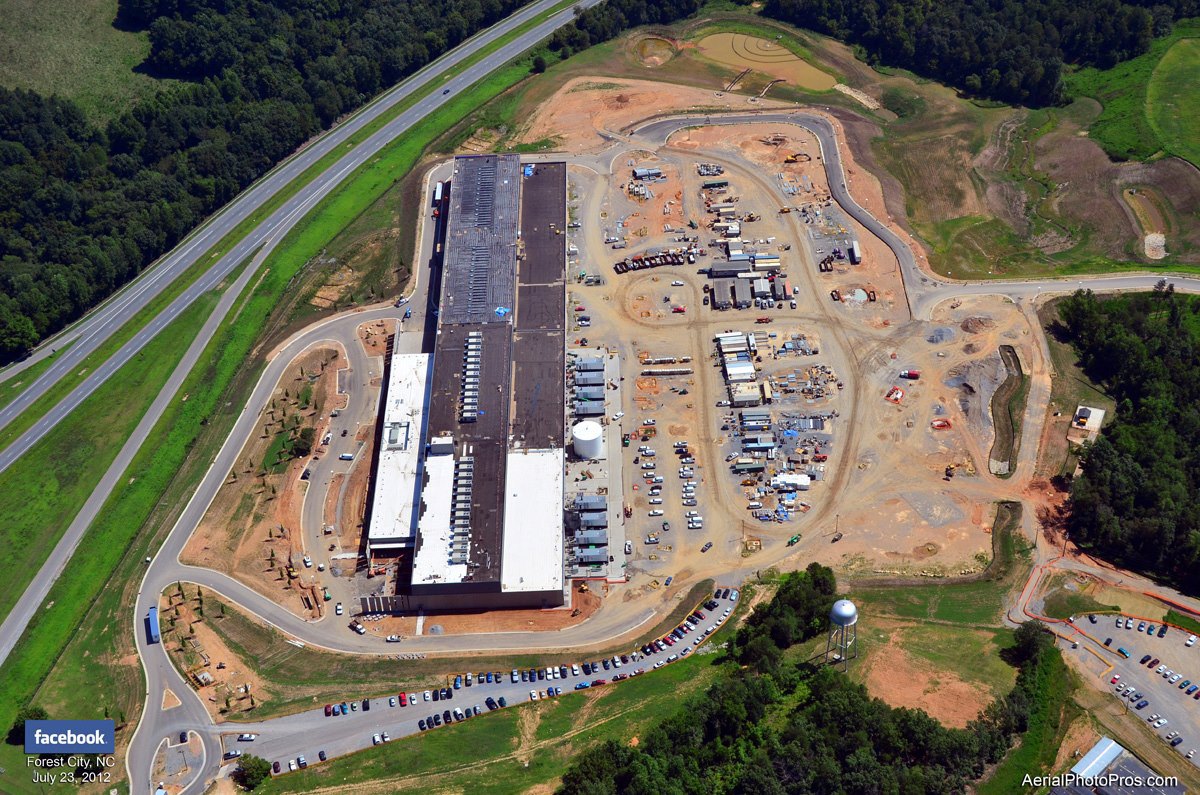Forest City, N.C., was once known as Burnt Chimney. But smokestacks are definitely a thing of the past, thanks to the social media giant Facebook, which is investing another $200 million to expand its data center campus there with a third, 480,000-sf building.
Construction reportedly is underway in Forest City, which lies between Asheville, N.C., and Greenville, S.C.
In a blog he posted on Facebook, Keven McCammon, the data center’s site manager, said that construction would add to a project that already has created “thousands of jobs in the regional economy and millions of dollars in economic impact.”
There’s no question that Facebook’s presence has been a boon to Forest City and its 7,400 local residents. The company invested $450 million into the first two buildings that each span 300,000 sf. RTI International, a firm Facebook retained to measure its economic impact, found that between 2011 and 2013 the data center had generated a total gross economic impact of $707 million and supported 5,000 jobs in North Carolina.
And since 2011, Facebook has awarded an estimated $575,000 to schools and qualified nonprofits in Rutherford County, where Forest City is located. Facebook recently agreed to support a pilot program to provide free WiFi access to 75 to 100 students in the local school district.
 Office space at Facebook's data center in Forest City.
Office space at Facebook's data center in Forest City.
Facebook, along with other tech companies, has favored North Carolina for its data center because of the state’s low-cost, reliable and available power, relatively inexpensive land, available water (at Forest City, Facebook is deploying evaporative cooling, which requires mist spray to cool the air as it enters the facility), proximity to East Coast customers, and generous tax incentives.
In June, Facebook announced plans to build a third data center on its campus in Altoona, Iowa, where its first data center there was already operational and a second was under construction. One month later, it broke ground on construction of a data center in Fort Worth, Texas, for which the company will invest $500 million in three 250,000-sf buildings. That data center, when it opens next year, will be powered entirely by wind power.
Facebook was the recipient of a $146.7 million incentive package from Fort Worth to locate its data center there. The Associated Press reports that state governments across the country over the past decade have extended nearly $1.5 billion in tax incentives to hundreds of data center projects initiated by various tech companies.
Facebook also has data centers in Pineville, Ore., and Lulea, Sweden.
Related Stories
| Jan 15, 2014
6 social media skills every leader needs
The social media revolution—which is less than a decade old—has created a dilemma for senior executives. While its potential seems immense, the inherent risks create uncertainty and unease.
| Jan 12, 2014
CES showcases innovations: Can any of these help you do your job better?
The Consumer Electronics Show took place this past week in Las Vegas. Known for launching new products and technologies, many of the products showcased there set the bar for future innovators. The show also signals trends to watch in technology applicable to the design and building industry.
| Jan 12, 2014
5 ways virtual modeling can improve facilities management
Improved space management, streamlined maintenance, and economical retrofits are among the ways building owners and facility managers can benefit from building information modeling.
| Dec 31, 2013
Top 10 blog posts from 2013
BD+C editors and our contributors posted hundreds of blogs in 2013. Here's a recap of the most popular topics. They include valuable lessons from one of the first BIM-related lawsuits and sage advice from AEC legend Arthur Gensler.
| Dec 31, 2013
BD+C's top 10 stories of 2013
The world's tallest twisting tower and the rise of augmented reality technology in construction were among the 10 most popular articles posted on Building Design+Construction's website, BDCnetwork.com.
| Dec 17, 2013
IBM's five tech-driven innovation predictions for the next five years [infographics]
Smart classrooms, DNA-based medical care, and wired cities are among the technology-related innovations identified by IBM researchers for the company's 5 in 5 report.
| Dec 16, 2013
Is the metal building industry in a technology shift?
Automation is the future you can’t avoid, though you may try. Even within the metal building industry—which is made up of skilled tradesmen—automation has revolutionized, and will continue revolutionizing, how we work.
| Dec 10, 2013
16 great solutions for architects, engineers, and contractors
From a crowd-funded smart shovel to a why-didn’t-someone-do-this-sooner scheme for managing traffic in public restrooms, these ideas are noteworthy for creative problem-solving. Here are some of the most intriguing innovations the BD+C community has brought to our attention this year.
| Dec 9, 2013
Does technology help or hinder innovation?
Whether digital technology will help or hinder workplace insights remains a topic of ongoing debate. FastCo.Design features insights from business scholars on both sides of the issue.
| Dec 5, 2013
Translating design intent from across the globe
I recently attended the Bentley User Conference in Vejle, Denmark. I attended the event primarily to get a sense for the challenges our Danish counterparts are experiencing in project delivery and digital communication. One story I heard was from a BIM manager with Henning Larsen Architects in Denmark, who told me about a project she’d recently completed overseas in the Middle East. She outlined two distinct challenges and offered some interesting solutions to those challenges.

















